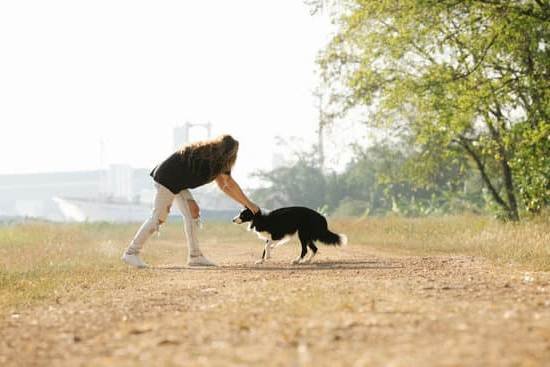Crate Training For Dogs
Crate training is one of the most effective ways to housebreak a dog. It can also be used to prevent destructive behavior and to provide a safe place for your dog to rest.
When crate training a dog, start by placing the crate in a room where the dog spends a lot of time, such as the family room. Put a soft blanket and a few toys in the crate, and let the dog explore it. Once the dog is comfortable going into the crate, begin feeding him his meals inside it.
Slowly increase the amount of time the dog spends in the crate, and begin closing the door while he is inside. If the dog cries, wait a few minutes and then check to see if he needs to go to the bathroom. If he doesn’t, ignore him. He will eventually stop crying and fall asleep.
The key to successful crate training is patience and consistency. Be sure to praise your dog when he does something good, and never use the crate as a form of punishment.
How Do You Crate Train A Dog With Separation Anxiety
?
Separation anxiety is one of the most common problems dog owners face. Dogs with separation anxiety often experience extreme anxiety when they are left alone, which can result in destructive behavior, excessive barking, and even urination and defecation.
Fortunately, there are a number of things you can do to help your dog overcome separation anxiety, including crate training. Crate training can be an extremely effective way to help dogs with separation anxiety, as it provides them with a sense of security and comfort.
Here are a few tips for crate training a dog with separation anxiety:
1. Start by gradually getting your dog used to the crate. Place a few treats inside the crate and leave the door open. As your dog becomes more comfortable with the crate, begin closing the door for brief periods of time.
2. Make the crate a positive place for your dog. Place some toys and treats inside the crate, and let your dog know that the crate is a happy place.
3. Don’t force your dog into the crate. If your dog is reluctant to enter the crate, don’t force him to go inside. Instead, try enticing him with a few treats or toys.
4. Be patient and consistent. crate training a dog with separation anxiety can take time, so be patient and consistent with your training.
Dog Crate Training Tool
There are many benefits to using a dog crate for training purposes. A crate can be a very effective tool for housebreaking a dog, and can also be used to confine a dog when you are not able to watch him closely.
When you are housebreaking a dog, it is important to use a crate. Dogs do not like to soil their living areas, so by confining the dog in a crate, you are preventing him from having any accidents in the house. A crate can also be a place where the dog can go to relax and feel safe.
If you are not able to watch your dog closely, you can also use a crate to confine him. This will prevent the dog from getting into trouble while you are away.
A crate can be a great training tool for all dogs, not just puppies. If you use a crate consistently and properly, your dog will learn to love his crate and will be happy to relax in it when needed.
How To Crate Train A 1 Year Old Dog
Crate training a 1 year old dog can be a little more difficult than training a younger dog, but it is definitely possible. The key is to be consistent and patient, and to make sure that your dog understands the rules of the game.
The first step is to introduce your dog to the crate. Put a toy or a treat in the crate, and let your dog explore it on his own. Once he is comfortable with the crate, you can start using it as a place to put your dog when you’re not able to supervise him.
If your dog starts to get restless in the crate, give him a few minutes to calm down, and then let him out. If he starts to bark or whine, wait until he stops before letting him out. Be sure to praise your dog when he does well in the crate.
It may take a little while, but with patience and consistency, you can crate train your 1 year old dog.
Crate Training Feed Dog In Crate
Crate training is one of the most effective ways to housebreak a dog. It is also a very helpful tool for potty training puppies. The basic idea is to confine the dog to a small area, such as a crate, until he goes to the bathroom. When the dog is first starting to be crate trained, he should be confined for very short periods of time, gradually increasing the amount of time he spends in the crate.
Dogs are den animals and like to have a small, confined area to call their own. When a dog is crate trained, he will start to view the crate as his safe place. This is a very desirable outcome, as it will help to keep the dog calm and relaxed in unfamiliar situations.
There are a few things to keep in mind when crate training a dog. First, the crate should never be used as a punishment. Second, the dog should always have access to water and should be given the opportunity to go outside to relieve himself frequently. Third, the crate should be big enough for the dog to stand up, turn around, and lie down in comfortably.
Crate training can be a very effective way to housetrain a dog, but it should not be used as a substitute for proper supervision. Dogs should always be supervised when they are outside of their crates, and they should never be left unattended in the crate for an extended period of time.
“

Welcome to the blog! I am a professional dog trainer and have been working with dogs for many years. In this blog, I will be discussing various topics related to dog training, including tips, tricks, and advice. I hope you find this information helpful and informative. Thanks for reading!





